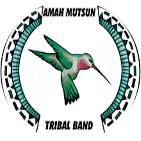
Impacts of climate change on the Amah Mutsun Tribal Band
Drought, wildfire, and sea level rise, as well as loss of native plants and animals, are threatening the physical, cultural, and spiritual health of the Tribe, its habitats, and ecosystems.
The Amah Mutsun Tribal Band is a continuous and historic Tribe composed of the descendants of the Indigenous peoples whose territories were taken over by Missions San Juan Bautista (Mutsun) and Santa Cruz (Awaswas) during the late 18th, 19th, and early 20th centuries. The Amah Mutsun is recognized by the State of California as a Tribal Government but lacks federal recognition. Consequently, the Tribe holds no tribal lands, nor does it receive financial assistance from either the Federal or State governments.
Historically, the Amah Mutsun ensured a sustained yield of plant and animal foods by careful management of the lands. Controlled burning of extensive areas of land was carried out each fall to promote the growth of seed-bearing annuals.
The Amah Mutsun maintains a sacred obligation to continue in the footsteps of their ancestors, stewarding the lands and waters of their traditional homeland. When the Tribe speaks of “cultural resources,” they look all around at the mountains, the meadows, the waterways and wetlands, the air, and scenic vistas – as well as those buried beneath them, and those who inhabit them. Those are the Amah Mutsun cultural resources and all hold value.
On land, climate change is causing loss of culturally important plant and bird species due to drought, wildfire, and increasingly variable rainfall. These impacts are threatening the physical, cultural, and spiritual health of the Amah Mutsun.
Below: The first cultural burn of the Amah Mutsun Tribal Band in contemporary times, in Pinnacles National Park in 2011 (Source: Rick Flores)
Catastrophic fires impact watersheds, water and air quality, rangelands, wildlife, culturally significant sites, infrastructure, croplands, and of course, the Amah Mutsun’s way of life. The August 2020 CZU Complex that burned over 86,000 acres in San Mateo and Santa Cruz Counties is an example of how the compounding impacts of fire suppression, poor land management, and climate change can result in widespread, destructive wildfires. The Tribe believes that fire can be managed more effectively if Indigenous stewardship and cultural knowledge around use of fire are more widely accepted and implemented by land managers.
One of the bird species important to the Tribe that has been impacted by climate change is the condor. The Amah Mutsun worked with Pinnacles National Park to reintroduce this culturally important species. These birds were threatened when the CZU Complex burned in nesting areas with fledgling birds, not yet ready to fly to escape the flames.
Native plant species of ethnobotanical importance to the Tribe have been impacted by climate change. These are species traditionally used for building, basketry, and food. Members have reported that many culturally important coastal prairie and woodland plants are becoming rarer and more difficult to restore, while invasive plants like Jubata grass, poison hemlock, and thistles are incredibly difficult to eradicate in grasslands.
Below: Tribal members propagating plants (Source: Amah Mutsun Tribal Band) The Amah Mutsun are witnessing impacts on local coastal waters, including sea level rise and warming ocean temperatures. The Tribe relies on historical ecological data preserved in coastal archaeological sites. With sea-level rise, artifacts are being exposed and destroyed as the earth is washed away. Without adequate monitoring and protection of these sites, this vital historical dataset for the Amah Mutsun Tribal Band and conservation science could be lost forever.
The Amah Mutsun are witnessing impacts on local coastal waters, including sea level rise and warming ocean temperatures. The Tribe relies on historical ecological data preserved in coastal archaeological sites. With sea-level rise, artifacts are being exposed and destroyed as the earth is washed away. Without adequate monitoring and protection of these sites, this vital historical dataset for the Amah Mutsun Tribal Band and conservation science could be lost forever.
Warm ocean temperatures can amplify harmful algal blooms that can be especially abundant and widespread within Amah Mutsun territory. Certain algae species produce toxins such as domoic acid that enter the marine food web and can render many culturally important resources toxic and inedible.
In creeks, streams, and rivers, rising air temperatures and drought have decreased water flows within Amah Mutsun historic lands. This has led to warmer waters in culturally important fish habitat, causing unfavorable spawning conditions.
Despite the lack of a permanent land base and federal recognition, the Amah Mutsun Tribal Band continues to fulfill their continuing obligation to protect the plants and animals on their Tribal homelands. The Amah Mutsun are reaffirming their role as environmental stewards by using innovative research, partnerships, and Tribal community education to relearn and apply traditional ecological knowledge to the most pressing issues in natural resource management and conservation.
This summary report and a detailed report are available for download below.
